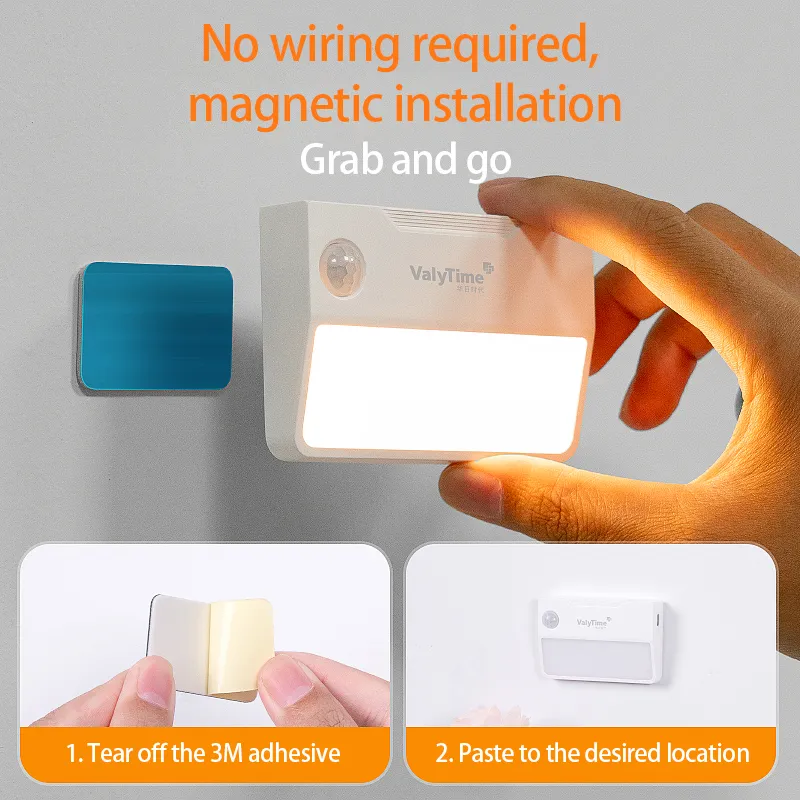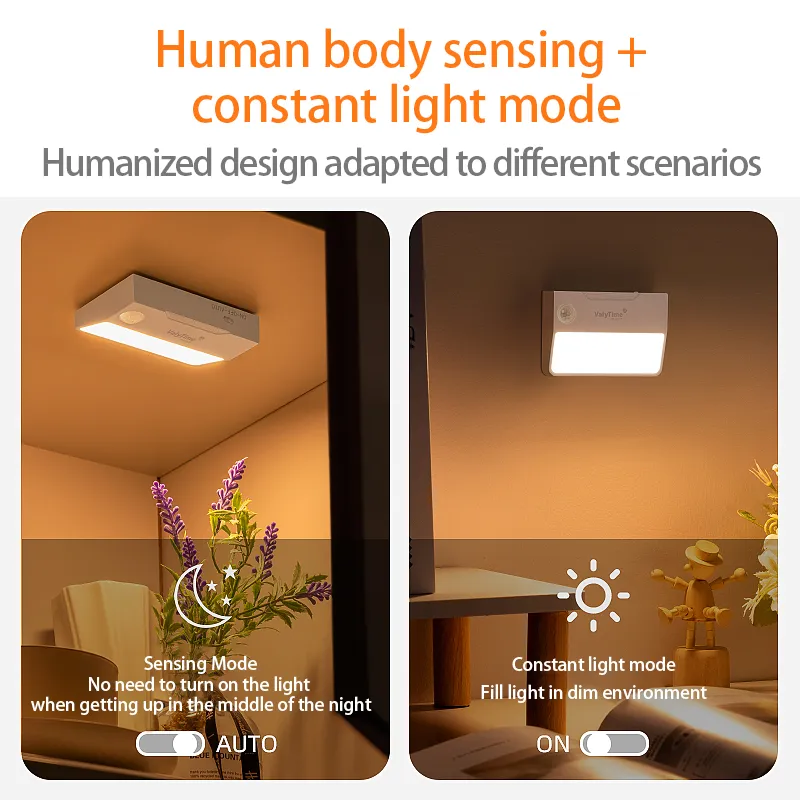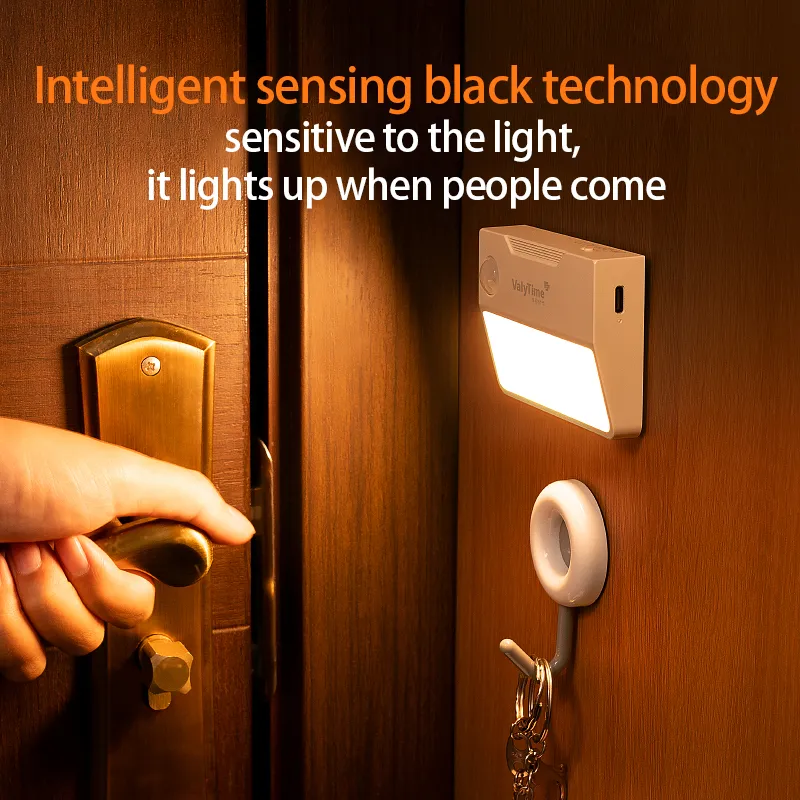What is the optimal sensitivity of motion sensor night light?
Motion sensor night light can automatically turn on or off according to the movement of human body or objects, which greatly improves convenience and safety. Motion sensor night light is widely used in corridors, bathrooms, bedrooms, stairs and other areas of the home, especially at night, to provide instant lighting in dark environments. However, how to adjust the sensitivity of motion sensor night light so that it can play the best effect in different usage environments is a question that many consumers are concerned about.
The sensitivity of motion sensor night light directly affects its working effect. If the sensitivity is set too high, the sensor may react to small changes, causing the light to turn on and off frequently; if the sensitivity is set too low, the sensor may not sense effective motion signals, so that the light cannot be turned on in time. Therefore, finding the right sensitivity setting is the key to ensure that motion sensor night light works properly and improves user experience.
In this article, we will explore the optimal sensitivity of motion sensor night light in detail, including how to choose the right sensitivity, factors that affect sensitivity, and how to adjust the sensitivity setting according to specific needs.

What is the sensitivity of motion sensor night light?
Motion sensor night light senses the surrounding motion through built-in sensors such as PIR sensors or microwave sensors. Sensitivity refers to the smallest change in motion that a sensor can detect, and is often used to describe the sensor's ability to respond to changes in the external environment. The higher the sensitivity, the smaller the movement that the sensor can detect; the lower the sensitivity, the larger the movement or change that the sensor needs to activate the light.
What is the adjustment range of motion sensor night light sensitivity?
Most motion sensor night lights allow users to adjust the sensitivity according to different usage environments. The sensitivity adjustment method varies depending on the brand and model of the device, but there are usually several common adjustment options:
● Low sensitivity: When low sensitivity is selected, the motion sensor night light will only be triggered under larger movements (such as human steps, large objects moving). This setting is usually used in relatively quiet environments that are not easily disturbed by small objects.
● Medium sensitivity: Medium sensitivity is suitable for most common home environments and can detect ordinary people's activities, such as walking and walking. This sensitivity is suitable for most users and can ensure the normal opening of the motion sensor night light without false triggering.
● High sensitivity: High sensitivity allows the sensor to sense very subtle movements (such as curtains blown by the wind, small shaking of objects, etc.). Although this setting can make the light turn on faster, it is also prone to false triggering, such as the influence of pets walking or wind.

How to determine the optimal sensitivity of the motion sensor night light?
Determining the optimal sensitivity of the motion sensor night light requires a combination of factors, including the use environment, sensor type, and the actual needs of the user. Here are some of the main factors that affect the sensitivity selection:
Factors of the use environment
● Space size: Different sizes of spaces have different requirements for sensor sensitivity. In a small room or hallway, low sensitivity may be sufficient, and too high sensitivity may cause the light to turn on frequently. In larger spaces, such as living rooms or basements, higher sensitivity may be required to ensure that the light turns on in time.
● Lighting conditions: If the installation location is bright (such as a window near direct sunlight), the sensitivity should be appropriately reduced to avoid false triggering of the sensor due to the influence of sunlight during the day. In darker environments, higher sensitivity can ensure that the sensor responds in time and avoids failure to trigger in the dark.
● The presence of interference sources: For example, if there is a fan, air conditioner, or other activities in the room, it is recommended to reduce the sensitivity to avoid false triggering. If used in a quieter, less active environment, a higher sensitivity can help ensure that the light senses motion more accurately.
Type of sensor
The sensitivity of the motion sensor night light is also affected by the type of sensor used. Common sensor types are PIR sensors (passive infrared sensors) and microwave sensors:
● PIR sensors: PIR sensors detect motion by detecting thermal radiation emitted by people or objects. PIR sensors may behave differently in different environments due to the influence of ambient temperature and infrared background. Therefore, when adjusting the sensitivity of the PIR sensor, temperature, humidity, and the reflection of thermal radiation by surrounding objects should be considered.
● Microwave sensors: Microwave sensors detect the movement of objects by emitting microwaves and detecting reflected waves. Compared with PIR sensors, microwave sensors are less sensitive to changes in light, so they are more suitable for use in changing environments, especially in places with unstable light.
Personal needs
The needs of each family and user are different. Some people may want the sensor to trigger the light at any slight movement, while others want to reduce unnecessary switching operations. The sensitivity of the motion sensor night light should be set according to the actual needs of the individual. For example, if used on stairs or in the kitchen, a higher sensitivity may be more appropriate to ensure that the light automatically turns on when walking; while in the bedroom, a lower sensitivity may be better to avoid false triggering at night due to minor movements (such as turning over).

How to adjust the sensitivity of the motion sensor night light?
Many motion sensor night lights provide a sensitivity adjustment function, which users can adjust according to their needs. The following are common adjustment methods:
● Manual adjustment: Most motion sensor night lights have physical knobs or buttons to adjust the sensitivity. By rotating or pressing the corresponding button, users can adjust the sensitivity setting of the lamp simply and quickly.
● Adjustment through APP: Some high-end smart motion sensor night lights allow users to adjust the sensitivity through the mobile phone APP. In the APP, users can make fine adjustments according to the specific environment and save multiple different setting configurations when needed.
● Automatic adjustment function: Some advanced motion sensor night lights have the function of automatically adjusting the sensitivity, which can automatically adjust the sensitivity of the sensor according to changes in the environment. For example, the sensitivity is higher at night, and the sensitivity is appropriately reduced during the day to avoid false triggering.
Looking to purchase LED lights at low prices without compromising on quality?
Huari Lighting Co., Ltd has been a reputable LED lighting manufacturer since 1996. With over 1 million units produced monthly, we supply a wide range of LED lighting products including downlights, ceiling lights, and bulbs. Our products are designed to meet international standards with CE, RoHS, and ERP certifications. We offer competitive prices, bulk discounts, and the flexibility of customized orders for large-scale purchases.
